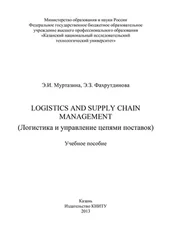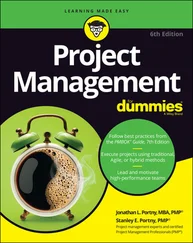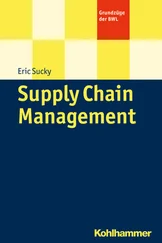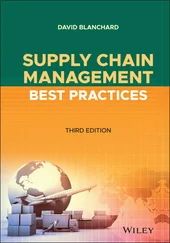The first step is to clearly define the process that you’re trying to improve and why you want to improve it. During this phase, you need to build a business case for why the project is important and what resources you need to complete it. An important part of building the business case is to get feedback from the people who deal with the outputs of a process: the customers. This feedback is called voice of the customer (VOC) . The overview of the project, including the VOC, should be summarized in a Six Sigma project charter.
 Writing up the project charter can be harder than people expect. Don’t get hung up worrying about making the charter perfect. Instead, just create a rough draft that explains what you are trying to do, which will make it easier to clarify your thinking and to get input from other people. The charter is your starting point. It’s okay to make changes and improve it as the project moves forward.
Writing up the project charter can be harder than people expect. Don’t get hung up worrying about making the charter perfect. Instead, just create a rough draft that explains what you are trying to do, which will make it easier to clarify your thinking and to get input from other people. The charter is your starting point. It’s okay to make changes and improve it as the project moves forward.
The second step is measuring the process that you’re trying to improve. Because Six Sigma is a mathematical approach, you need to collect data so that you can measure how the process is working and calculate the amount of variation. Taking good measurements is critical so that you can calculate benefits during the next steps in a project. If your measurements aren’t accurate, your improvement efforts are probably going to be misguided.
After you collect data about the process, you analyze the data. In the world of Six Sigma, this analysis often requires a solid understanding of statistics and the use of some statistical analysis software. Generally speaking, the data helps you identify variations in a process and shows how those variations affect the quality of your products. Data analysis can help you understand what things are causing the variability — the root causes — so that you can look for ways to improve the process.
 SIX SIGMA TRAINING AND CERTIFICATION
SIX SIGMA TRAINING AND CERTIFICATION
Lots of programs are available to educate people about Six Sigma, and many of them will even grant you a certificate when you’re done. Generally, there are four levels of training and certification:
Yellow Belts understand the basic concepts and terminology of Six Sigma and can contribute as a member of a process improvement project.
Green Belts have a solid understanding of Six Sigma and can lead process improvement projects on their own.
Black Belts have mastered Six Sigma and can teach other people how to manage process improvement projects.
Master Black Belts have such a high level of mastery that they can train and supervise Black Belts.
The next step is putting the knowledge you gained from data analysis into action by making changes to improve the process. These changes can happen all at once, or they can be introduced over time. Commonly, this phase includes some pilot studies to provide confirmation that the changes provide the expected benefits before you implement them throughout a process. If you decide that several improvements need to be brought online over time, you can sequence them in a multigenerational project plan (MGPP) . An MGPP is like a road map that shows the order in which you will implement improvements.
The funny thing about improving a process is that sometimes, when you stop paying attention to it, the process goes right back to working the way it did before you improved it. In Six Sigma, the final step is establishing a system to ensure that the improvements you made become permanent. Control often involves performing ongoing measurements and reporting to show that the improvements remain in place and continue to provide consistency over time.
The Theory of Constraints (TOC) is one of the simplest, most powerful supply chain concepts. The basic idea is that every process is limited by some kind of constraint. (Think of the saying “A chain is only as strong as its weakest link.”) TOC is about tuning an entire supply chain to run at the same pace as the slowest step in the process.
There are many examples of how constraints control all the processes around us. In the world of auto racing, there are times when you need to limit the speed at which cars travel around the track, so you send out a pace car that no one is allowed to pass. When you’re draining a bathtub, the rate at which water flows out is constrained by the size of your drain. In other words, the most restrictive step in a process is the one that constrains the entire system. TOC helps you focus improvement efforts on the constraints because that is where you can have the greatest effect on the supply chain.
After you find the constraint, you have two choices:
Slow all the other steps so that they run at the same speed as the constraining step. This option prevents the buildup of inventory between the steps in your process.
Improve the constraint so that the entire system moves faster. As you continue to improve the constraint (perhaps by using Six Sigma), eventually, the constraint is no longer the slowest step in your process and stops being a constraint. Some other step becomes the constraint that’s limiting your process, and the cycle starts again.
Suppose that you have a supply chain that involves several steps. Your customers, at the end of the supply chain, want to buy 1,000 widgets each month. But you can deliver only 750. How do you find the problems and fix them so that you can increase the capacity of your supply chain and sell your customers the products they want?
Because of TOC, you know that the entire process is limited by a single constraint — in this case, the slowest step in the process. Instead of trying to fix everything, you need to start by figuring out which step is slowing the rest of the system.
After you find the constraint, you can slow all the other steps so that the entire system is running at the same speed — in this case, tuning each step to produce only 750 widgets per month. That way, you won’t have inventory building up in between the steps of your process. But you also won’t be meeting all of your customer’s needs.
Alternatively, you can improve the constraint, allowing the entire supply chain to move faster. As you continue to make improvements, the constraint no longer limits the process. At that point, some other step has become the constraint. Then you need to shift your focus to the new constraint.
 TOC was made popular by a novel called The Goal, by Eliyahu M. Goldratt (North River Press, 2014). Herbie was one of the characters in the book, and his name has since been adopted in TOC to describe the constraining step in any process. Although looking for a constraint may sound obvious, the problem is that constraints are often hard to find. When a constraint is at the beginning of a process (like a pace car) or at the end of a process (like a bath drain) then the process is probably stable. When a constraint occurs in the middle of a process, the constraint can cause chaos. For example, a machine in the middle of an assembly line that breaks down might be a Herbie. But until you look at it from the perspective of TOC, people might not see how the starts and stops of that one machine actually cause inefficiencies throughout the whole supply chain and lower the company’s overall capacity.
TOC was made popular by a novel called The Goal, by Eliyahu M. Goldratt (North River Press, 2014). Herbie was one of the characters in the book, and his name has since been adopted in TOC to describe the constraining step in any process. Although looking for a constraint may sound obvious, the problem is that constraints are often hard to find. When a constraint is at the beginning of a process (like a pace car) or at the end of a process (like a bath drain) then the process is probably stable. When a constraint occurs in the middle of a process, the constraint can cause chaos. For example, a machine in the middle of an assembly line that breaks down might be a Herbie. But until you look at it from the perspective of TOC, people might not see how the starts and stops of that one machine actually cause inefficiencies throughout the whole supply chain and lower the company’s overall capacity.
Читать дальше
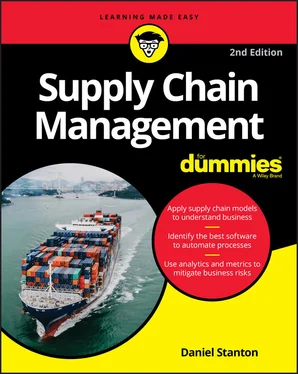
 Writing up the project charter can be harder than people expect. Don’t get hung up worrying about making the charter perfect. Instead, just create a rough draft that explains what you are trying to do, which will make it easier to clarify your thinking and to get input from other people. The charter is your starting point. It’s okay to make changes and improve it as the project moves forward.
Writing up the project charter can be harder than people expect. Don’t get hung up worrying about making the charter perfect. Instead, just create a rough draft that explains what you are trying to do, which will make it easier to clarify your thinking and to get input from other people. The charter is your starting point. It’s okay to make changes and improve it as the project moves forward. SIX SIGMA TRAINING AND CERTIFICATION
SIX SIGMA TRAINING AND CERTIFICATION